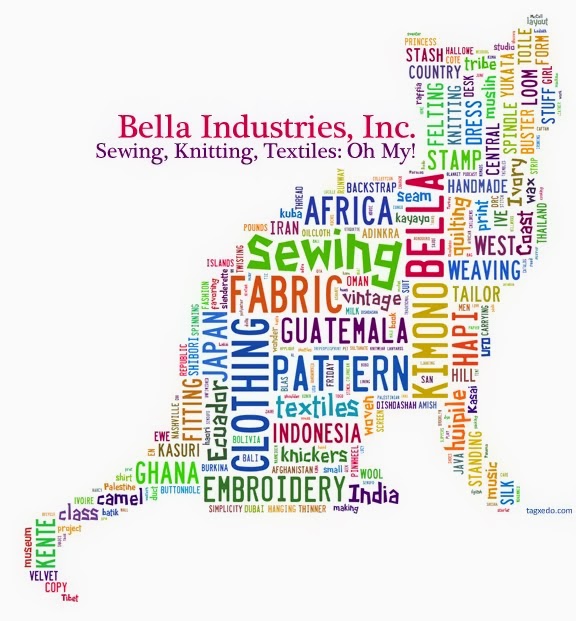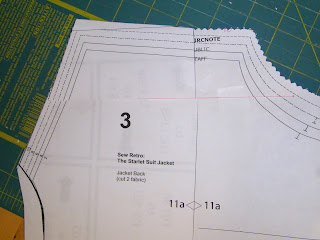
Besides
re-painting my sewing room, I also rearranged it. I still have the same furniture in it, but think I made it a little less foreboding (I'll explain later). Below you'll see some before/after floor plans, but I'll start off with this little
rack from Ikea, which used to be for coats in our previous kitchen. Now that we have a mudroom w/ a closet shelf & rack, I painted it white & hung it right by my sewing table. I put ribbons on some of the tools I use regularly (pinking shears, scissors, clippers, rotary cutter, and sliding gauge). It's great now to have them all on my left when I need them, rather than rumbling through the drawer. So far Bella has shown no interest in them, so I'm not worried about her hurting herself.
She had a big adventure today, BTW. She ran outside when I opened the sliding glass door. By the time I got my shoes on & went out to help the Roommate round her up, she was back at the mudroom door trying to get in. This has happened before--she spends a few minutes outside then decides it's not that bad inside! Silly kitty.
On the left, you'll see the same hooks being used for my necklaces; thanks to the Roommate for getting those up last week. It's great to have the necklaces out, too...much easier to find.
When I posted the photos of my newly painted sewing studio in February, I mentioned before & after drawings for the arrangement. So I thought I'd get those up now...finally. I just wanted to show one arrangement that I thought would work and then the arrangement I have now, which seems better, though I'm not sure why.
(As always, clicking on a photo will take you to the largest size available.) All measurements are in inches. All the furniture is from Ikea, I won't put all the links in because I'm not sure it's all still available...the sewing table is 5-6 years old at least.
 |
| BEFORE rearranging furniture |
Okay, here's the deal: This first arrangement seemed better because the table fits pretty much exactly under the window; I thought, "Hey, lots of light!" But I didn't like the cabinet where it was; it's tall, and seemed to make the whole room rather dark (walking into a room with a bookcase or cabinet
right there by the door was just weird). Also, with the table against the east wall, it meant the table I use for cutting out was in that dark corner. There's no overhead light in the room--I've added 3 lamps of varying brightness and I think I probably need another
OttLite (daylight lamp).
So after lots of thought, I took everything out, re-painted the room (with the Roommate's help), and am now using this arrangement. Which seems better; the cabinet, which I don't use too often, is in the dark corner (and I put one of the desk lamps on top of it, so I can use that when I need to get into the cabinet). What I use more often are the books & boxes that are stored on the shelves (
photo here).
 |
| AFTER rearranging furniture |
Because the gateleg table is now in the corner by the door, it's also closer to the power outlet--meaning I can store the shredder under there. Bella also finds this an excellent hiding place because she's safe on 3 sides and a heating vent is right there--though is it a hiding place if I know exactly where she is?
I am liking it much better, though the drop down ironing board sort of covers the sewing table & almost touches the sewing machine. Plus--if I'm ironing something huge, a lot of the weight can be on the table. Minus--I cannot sew with the ironing board down; however, because it's so easy to put up & take down, that's not an issue.
Music? My new crush: Odio Paris - live, doing
Cuando Nadie Pone un Disco.

.JPG)




.JPG)



.JPG)
















